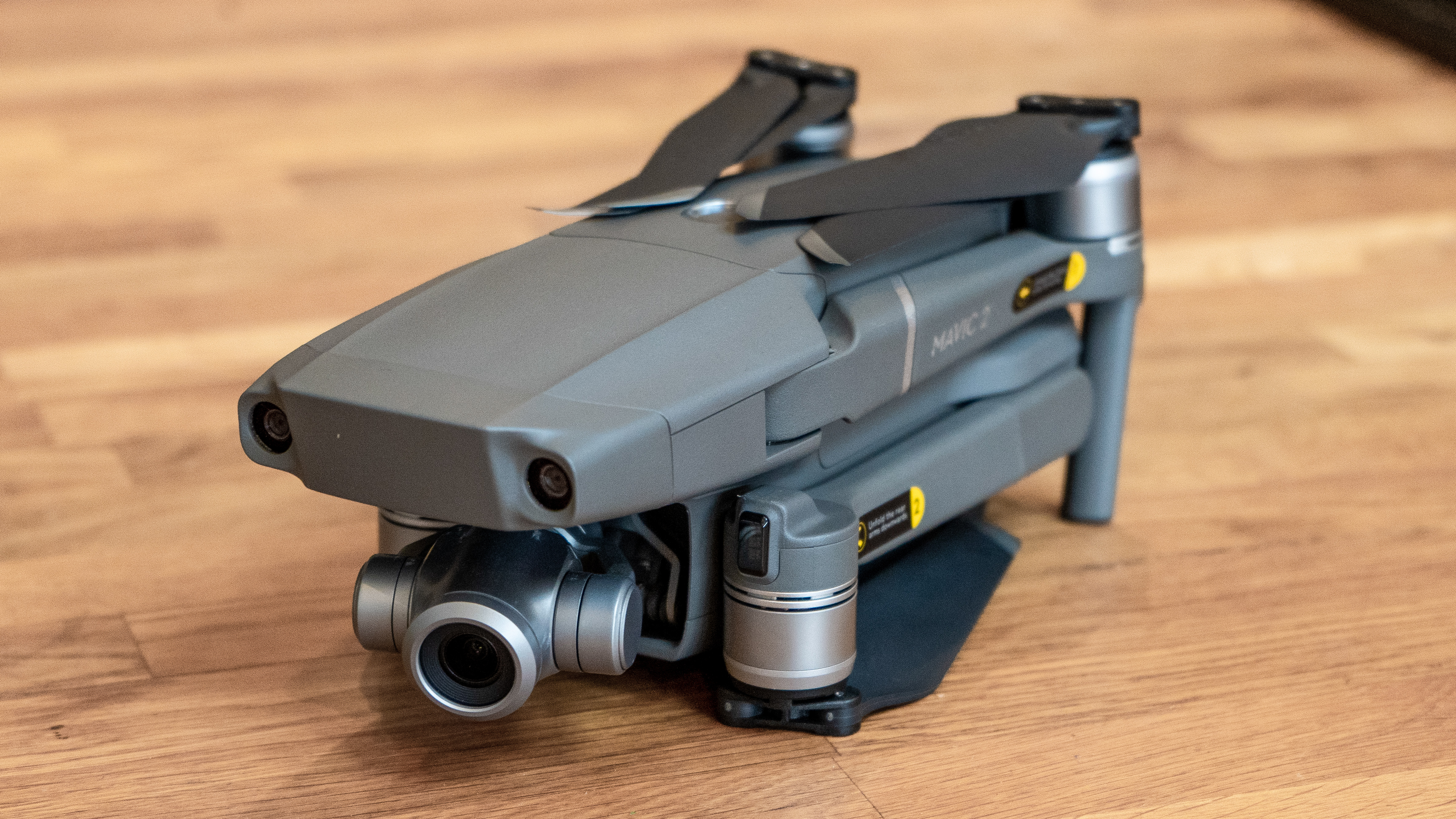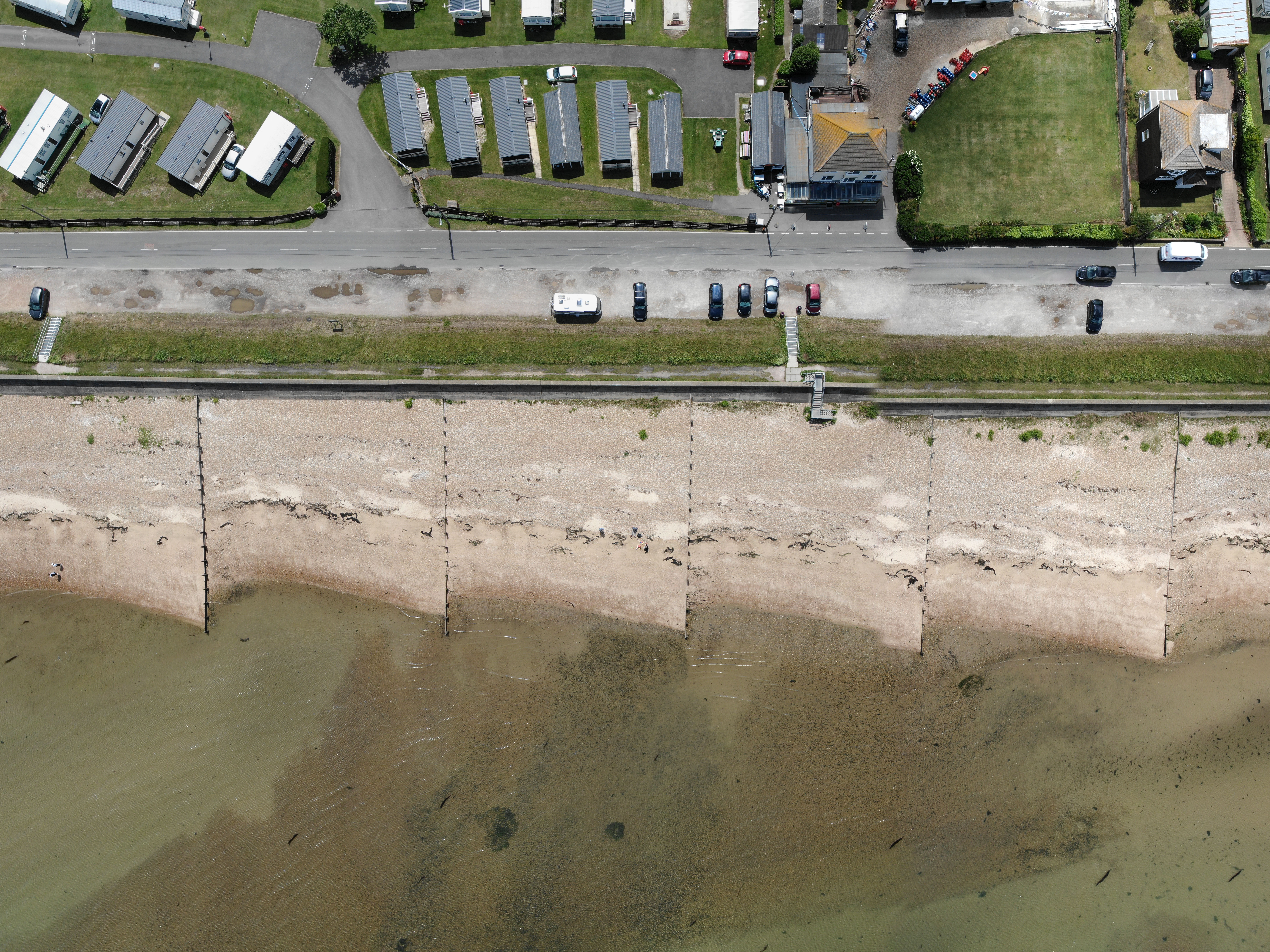Digital Camera World Verdict
The DJI Mavic 2 Zoom is a truly flexible drone, small enough to be carried in a big pocket and with the ability to create capture moments on a family holiday or impressive content for a professional editing environment.
Pros
- +
4K Video
- +
Great battery life
- +
All-round sensors
- +
Stable in high wind
Cons
- -
60fps only at 2.7K
- -
Dynamic range could be better
Why you can trust Digital Camera World
The DJI Mavic 2 Zoom is a drone that takes the impressive portability of the original Mavic Pro and adds not only professional features for content creators but all-round smart collision sensors and tops it off with a 2x optical zoom lens, offering an all-new perspective – and making this one of the very best drones around for video and aerial photography.
The company has taken the opportunity of the Mavic 2 to cement its reputation as the leading prosumer drone manufacturer.
Some designers might just have improved the gimbal cover and upped the video resolution, but this drone’s collision sensing system has the potential to welcome many more drone operators, for whom safety will now be much less of a concern.
The Mavic 2 Zoom also brings an awkward choice for many: there is a DJI Mavic 2 Pro out there too, with a camera so different it is worthy of a separate review, but otherwise matching airframes. With that in mind, it seems right to begin with the minor complaint that this is a choice which needs to be made at all – a swappable camera would have been wonderful – but it’s worth remembering that the price point is around a quarter of the first drone with that kind of equipment, and at least we can be confident of the connection.
The Zoom weighs in at 905g and folds up to the kind of size you might try to stuff into a large jacket pocket. The accompanying controller, like the original Mavic, is comparable to a game system joypad with antenna and a phone grip. Capturing video at up 4K@30fps or FHD@120fps with a lens which can remotely be zoomed from 24mm EFL to 48mm EFL is where the Mavic 2 Zoom shines compared to other drones – most others drones at this price point have a fixed focal length at the wider end (the Mavic 2 Pro is 28mm EFL) limiting creative possibilities.
Kit options
Launched in 2018, the DJI Mavic 2 Zoom is available a starting price of US$1349 / £1099 / AUS$1999, which gets you the drone, one battery, a charger and a controller.
The best camera deals, reviews, product advice, and unmissable photography news, direct to your inbox!
DJI also offer a “Fly More” bundle, which adds to that two additional batteries, a car charger, a charging hub, a battery to power bank adaptor, low-noise propellers and an exquisitely made shoulder bag with room for all the gear for a 3-battery shoot. Since you’ll always want more batteries, it’s difficult to understate how useful a charging hub can be when you’re using multiple batteries, and delicate devices like drones benefit from well-fitted bags, we would always recommend getting the Fly More kit if you can.
Design and controller
The Mavic set the tone for DJI’s many folding aircraft, and there is much to commend it whether you’re coming to drones for the first time or have flown solid-hull designs like the Phantom. Any worries that the hinges might prove a weak spot are quickly dispelled when you first snap them out to the full 354 mm span, motor to motor, they are reassuringly solid.
The folding propellers – which are held in optimal position by centripetal force – have enough lift to ascend at up to 5 m/s and the drone can achieve up to 72 kph (45mph) horizontally (leaning 35˚ to do so). There seems to be no cost in terms of hovering accuracy either; DJI claims a hover-accuracy of 0.5m with GPS alone, or 0.1m when the downward-facing vision system can get a clear view (altitude of 11m/36ft or less). The reality is probably even better, making it easy to get aerial shots that look like they were tripod mounted.
Examining the whole body of the drone, every element is made from quality materials. The battery has 3850 mAh and is held on the fuselage’s back with two solid button-operated clips. It has DJI’s familiar 4-light charge indicator & anti-fire system which takes a lot of the pressure off when using powerful LiPo power systems.
The rest of the fuselage is covered with the small lenses which make up the omnidirectional obstacle sensing system. At the front, back, and bottom are paired lenses for binocular vision – helping the drone’s AI judge distances up to 20m – while the side-mounted cameras are about half as effective and the upward-looking system is really just there to stop you going into a ceiling.
The body also finds room for a USB-C socket, MicroSD card slot and a downward-facing LED light, and some vents, all while maintaining slick styling.
The controller is incredibly compact but uses a dual-frequency system to offer up to 10km / 6 miles range in the USA (or 6km / 3.7 miles in the rest of the world, where radio regulations are stricter). Even pretty chunky phones will fit into the grabbers beneath and the provided just-the-right-length cables for all major phone brands are a very nice touch. The only frustration, if coming from larger drones, is having your monitor beneath the controller, but you quickly adapt.
DJI Mavic 2 Zoom: Photos
When shooting stills, the Mavic 2 Zoom has a reasonably average 1/ 2.3” CMOS sensor with 12 million pixels (4000 x 3000), much like its predecessor. What’s different is the optical zoom lens in front of it, which allows you to vary the field of view from 83˚ to a much narrower 48˚. Operating the zoom is simple, via a finger-wheel on the remote’s shoulder, with the framing previewed in the live view.
The app also gives access to a very thorough range of photography modes; exposure bracketing (3 or 5 shots), burst mode, interval shooting and manual control, as well as the option of raw shooting, so most photographers will feel pretty well equipped.
There are also a lot of well-implemented features which should impress post-production enthusiasts (especially those who’d rather the post was done for them). The excellent panoramas are created by the DJI software automatically turning the drone for you then stitching the resulting images. With the Mavic 2 there is also Hyperlight (which is a little like long exposure) and HDR, both of which are processed on board.
In addition, the Zoom features an extra trick not found on your average fixed-lens drone, something DJI call ‘Super Resolution,’ which is an extra automatic panorama – when you select this mode, the camera sets itself to its widest setting, but when you hit the shutter it hovers, zooms right in, and captures 9 frames, and stitches them into a 48-megapixel still – great for landscapes
In short, the Mavic 2 Zoom can take a good still in normal flying conditions, does OK in low light (with up to 3200 ISO) but isn’t noise-free, and can impress against other drones at night, but for that you’ll need to let the software handle the post-processing.
DJI Mavic 2 Zoom video capture
DJI Mavic 2 Zoom - sample video
While the Zoom’s camera is good at photography, of the Mavic 2 drones, it feels like this machine was meant for video. It is capable of the same 4K as its sibling, at up to 30fps. For action fans, you can capture video at 2688x1512 (or ‘2.7K’) at 60fps for slick slow-mo, or even 1080P at 120fps.
For those who want to speed time up, Hyperlapse offers a kind of time-lapse in which you can pre-program the drone’s flight for a smooth tracking shot, orbiting a subject or even following waypoints.
Having a zoom lens, even for simple tracking shots, puts you as a pilot in the same ball-park as the enormous (and enormously expensive) Inspire series aircraft, offering real flexibility when composing shots (or giving nervous subjects a bit more breathing space).
Moreover, the zoom lens – which can be smoothly operated even while filming – also brings the exclusive Dolly Zoom feature. This is just one of the QuickShots; you simply position the drone in the starting position and press the shutter and the software does the rest, in this case flying backwards while zooming in so your subject remains static as the perspective warps, just like Hitchcock.
DJI Mavic 2 Zoom video - tiny planet zoom effect
Incredibly, this is just the start of the drone’s intelligence; it also features ActiveTrack and Point of Interest features which allow it to follow or orbit a subject for you. These modes result in stunningly professional-looking shots which less than half a decade ago would have required a dual-operator professional rig with a five-figure price tag.
In terms of quality, the 4K output is crisp and DJI’s D-Cinelike profile means you can still work with the 8-bit output when grading in a pro edit. Remembering to dissuade the machine from changing the exposure mid-shot can be tricky, but exposure lock, focus lock and manual modes are all there if you need them.
DJI Mavic 2 Zoom: Verdict
While drone rules in most countries will need you to register, the cost is typically in single digits and the process online, which seems more than fair when you gain access to the powerful feature set the Mavic 2 Zoom offers while remaining surprisingly portable.
In a professional setting, the drone’s size and flight time are useful – it can remain aloft long enough to pick up plenty of content without disturbing performers or other crew. Photographers interested only in stills might well find the Mavic 2 Pro (with its 20-megapixel sensor and adjustable aperture) worth considering, but if you’re producing content to be consumed at 4K or less (pretty much anywhere online) the Zoom is cheaper, more flexible, and more fun.
- Mavic 2 Pro vs Zoom – which is best?
- DJI Mavic 2 Pro review
- Best accessories for your drone
- The best drones for beginners
- Best drones for kids
- The best DJI drones
- Best underwater drones
- 12 things you need to make money from a drone
- The best camera insurance for photographers
- The best camera backpacks

With over 20 years of expertise as a tech journalist, Adam brings a wealth of knowledge across a vast number of product categories, including timelapse cameras, home security cameras, NVR cameras, photography books, webcams, 3D printers and 3D scanners, borescopes, radar detectors… and, above all, drones.
Adam is our resident expert on all aspects of camera drones and drone photography, from buying guides on the best choices for aerial photographers of all ability levels to the latest rules and regulations on piloting drones.
He is the author of a number of books including The Complete Guide to Drones, The Smart Smart Home Handbook, 101 Tips for DSLR Video and The Drone Pilot's Handbook.









